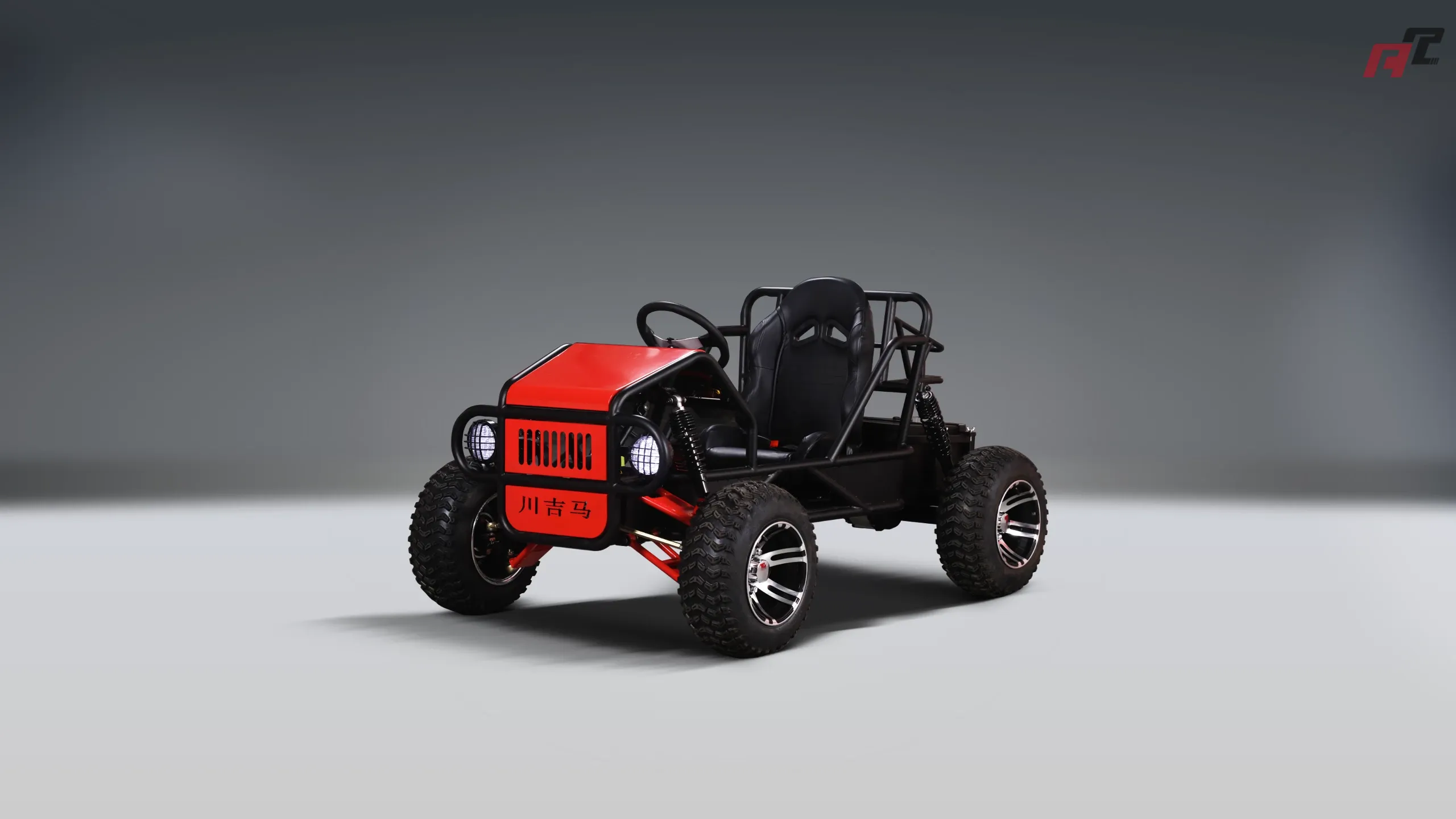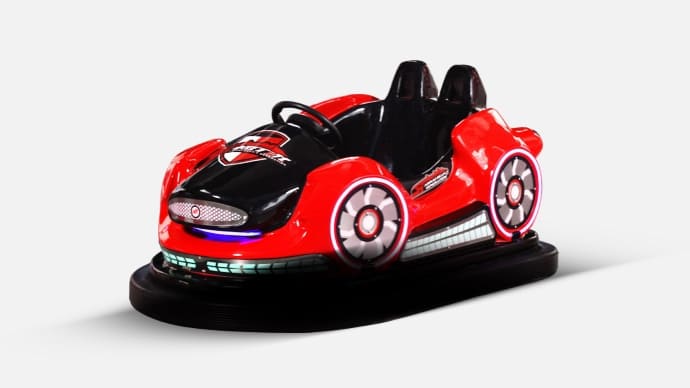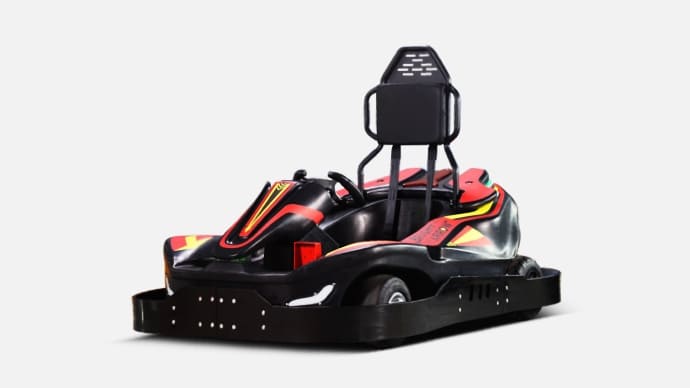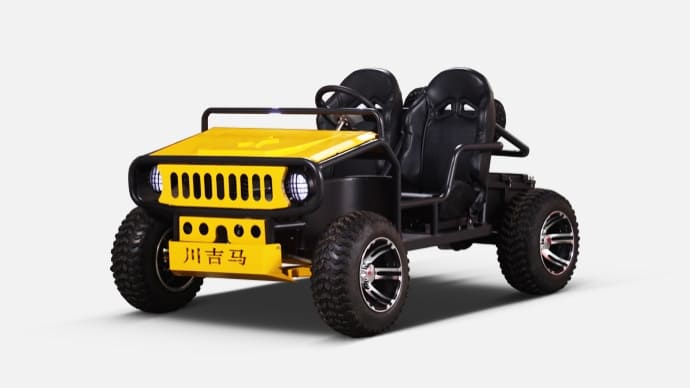Converting Go-Karts into Battery-Powered Bumper Cars: Pros and Cons
- Converting Go-Karts into Battery Bumper Cars: Pros and Cons
- Introduction: Why consider a Battery Bumper Car conversion?
- What is a Battery Bumper Car?
- Pros: Cleaner operation and better guest experience
- Pros: Lower day-to-day operating costs
- Pros: Flexibility and venue design advantages
- Cons: Initial conversion and equipment costs
- Cons: Added weight and handling changes
- Cons: Safety and certification requirements
- Performance trade-offs: runtime, charging, and throughput
- Maintenance differences: electric vs petrol systems
- Cost and lifecycle comparison (typical ranges)
- Technical considerations for a successful conversion
- Operational best practices
- When conversion makes sense
- When buying new is better
- How ANCHI Amusement can help with conversions and full solutions
- Summary checklist before converting
- FAQ — Frequently Asked Questions about Battery Bumper Car conversions
- Q: How long will a converted Battery Bumper Car run between charges?
- Q: Which battery type is best: lead-acid or lithium-ion?
- Q: Is converting go-karts legal and safe?
- Q: How much does a conversion typically cost?
- Q: Can ANCHI Amusement provide conversion services or new battery bumper cars?
Converting Go-Karts into Battery Bumper Cars: Pros and Cons
Introduction: Why consider a Battery Bumper Car conversion?
Turning existing go-karts into a Battery Bumper Car attraction can be an efficient way to expand an amusement venue’s offerings. A Battery Bumper Car blends the thrill of impact-play attractions with the cleaner operation and quieter experience of electric propulsion. For venue owners and operators looking to increase revenue per square meter, understanding the trade-offs—cost, runtime, maintenance, safety, and guest experience—is essential.
What is a Battery Bumper Car?
Battery Bumper Cars are amusement vehicles powered by onboard electric batteries (commonly lithium-ion or lead-acid). Unlike traditional tethered bumper cars, battery models run untethered and rely on robust bumpers, frame reinforcements, and battery management systems (BMS) for safety. Converting a go-kart into a Battery Bumper Car typically involves adding a battery pack, motor controller, reinforced bumpers and safety elements, and adapting steering or throttle systems for the new use case.
Pros: Cleaner operation and better guest experience
Battery-powered bumper cars reduce emissions and noise compared with petrol engines. For indoor venues, the elimination of exhaust is a major health and regulatory advantage. Electric drivetrains also provide instant torque and smoother power delivery, which many guests perceive as more fun. The quiet operation makes the attraction more family-friendly and allows for longer operating hours without disturbing neighbors.
Pros: Lower day-to-day operating costs
Electric vehicles are typically cheaper to operate per hour than petrol alternatives. Electricity costs and fewer fluids reduce variable costs. Modern lithium-ion batteries typically have higher cycle life (1,000–3,000 cycles depending on chemistry and depth-of-discharge) compared to lead-acid alternatives (roughly 300–500 cycles). This can translate into lower lifetime battery replacement costs for lithium-based Battery Bumper Cars.
Pros: Flexibility and venue design advantages
Converting go-karts gives operators flexibility to repurpose vehicles according to seasonal demand or audience. Battery Bumper Cars can be used both indoors and outdoors (with proper weatherproofing), and they are easier to integrate into themed environments because they run quietly and can be fitted with lights and audio effects.
Cons: Initial conversion and equipment costs
The upfront cost to convert a go-kart includes battery packs, controllers, BMS, reinforced bumpers, and labor. Battery costs vary by chemistry and capacity; lithium-ion pack prices in recent market trends have fallen to roughly $100–$150 per kWh for larger volumes (2023–2024 market averages). For a small amusement vehicle requiring a 2–5 kWh pack, the battery-only cost can range from a few hundred to over a thousand USD per unit, depending on quality and warranty.
Cons: Added weight and handling changes
Batteries and reinforced bumpers add weight. Battery pack weights commonly range from 20–100 kg for small amusement vehicle systems depending on capacity and cell choice. Increased weight affects turning radius, suspension wear, and collision behavior—so chassis reinforcement and suspension tuning are often necessary to maintain safe, predictable handling.
Cons: Safety and certification requirements
Battery systems, particularly lithium-ion, require proper integration: certified BMS, thermal management, fire-suppression planning, and safe charging stations. Lithium-ion can pose thermal runaway risks if damaged. Conversion projects may therefore need design verification and compliance checks with local safety standards for amusement rides, and potentially third-party certification depending on jurisdiction.
Performance trade-offs: runtime, charging, and throughput
Runtime depends on battery capacity, vehicle weight, motor efficiency, and usage pattern. Typical small amusement battery systems might deliver 1–6 hours of operation on a full charge under moderate use. Charging strategies (swappable battery packs vs. centralized chargers) impact throughput: swappable packs minimize downtime but increase battery inventory and complexity; centralized charging is lower-cost but requires downtime or more vehicles to maintain continuous operation.
Maintenance differences: electric vs petrol systems
Electric drivetrains have fewer moving parts and usually lower routine maintenance (no oil changes, fewer filters). However, battery health monitoring, periodic capacity checks, and electrical system inspections add a different maintenance regimen. Batteries also require controlled storage temperatures to maximize lifespan.
Cost and lifecycle comparison (typical ranges)
| Criteria | Converted Battery Bumper Car | Standard Petrol Go-Kart |
|---|---|---|
| Initial conversion / equipment cost | $1,000–$6,000 (battery, BMS, bumpers, labor) | $500–$3,000 (engine, exhaust, basic safety) |
| Fuel / energy cost (per hour) | Lower — electricity typically cheaper than gasoline per operating hour | Higher — fuel, oil, filters |
| Maintenance frequency | Lower mechanical; requires electrical inspections and battery checks | Higher mechanical maintenance (engine tune-ups) |
| Battery / engine lifetime | Battery packs: 1,000–3,000 cycles (Li-ion); 300–500 (lead-acid) | Small petrol engines: variable; regular rebuilds recommended after thousands of hours depending on care |
| Weight impact | +20–100 kg depending on pack size | Typically lighter in overall vehicle weight (engine weighs less than large battery packs) |
| Safety considerations | Requires BMS, thermal management, safe charging; risk of battery damage in collisions | Requires fuel management, exhaust ventilation (indoors), fire safety for fuel |
Technical considerations for a successful conversion
Key technical elements include choosing the right battery chemistry (lithium-ion for energy density and cycle life; sealed lead-acid for lower initial cost but heavier and shorter life), a properly sized motor and controller (BLDC motors with controllers sized for continuous and peak loads), and a certified BMS. Reinforced bumpers, seat belts, and impact-absorbing frames help ensure safety in contact-driven play.
Operational best practices
Plan for charging logistics (swap vs. charge-in-place), training for staff on battery handling, and a preventive maintenance schedule focusing on electrical connections, battery state-of-health, and bumper integrity. For indoor venues, ensure ventilation for heat dissipation and designated charging rooms with fire-safe protocols.
When conversion makes sense
Conversion is attractive if you already own go-karts that are structurally sound and you want to expand attractions without buying new vehicles. It is especially compelling for indoor venues, family entertainment centers, or resorts where quiet, low-emission attractions can extend operating hours and reduce regulatory hurdles tied to exhaust emissions.
When buying new is better
If existing chassis are near end-of-life, or if the budget allows a purpose-built design, purchasing factory-built Battery Bumper Cars may be safer and simpler. Purpose-built models are engineered from the ground up for impacts, battery integration, weight distribution, and guest safety, and they often come with warranties and after-sales support.
How ANCHI Amusement can help with conversions and full solutions
ANCHI Amusement is one of the leading manufacturers of amusement equipment in China. We offer custom go-kart manufacturing and full venue design solutions from concept to execution. With over 5,000 m² of production space, multiple assembly lines and a technical team of 30+ specialists, ANCHI can support conversions to Battery Bumper Cars or supply purpose-built electric bumper cars, with after-sales service to match. Learn more at https://www.anchiamusement.com/.
Summary checklist before converting
- Inspect chassis and frame condition; reinforce where necessary. - Determine battery chemistry and capacity based on desired runtime and budget. - Specify motor/controller and BMS with appropriate safety margins. - Design charging/swap workflow and storage safety procedures. - Plan for additional weight, suspension tuning, and safety features (bumpers, belts).
FAQ — Frequently Asked Questions about Battery Bumper Car conversions
Q: How long will a converted Battery Bumper Car run between charges?
A: Typical runtimes range from 1 to 6 hours depending on battery capacity (2–5 kWh common for small amusement vehicles), vehicle weight, guest usage patterns, and motor efficiency. Planning for swappable batteries or having reserve vehicles helps maintain continuous operation.
Q: Which battery type is best: lead-acid or lithium-ion?
A: Lithium-ion offers higher energy density (typically ~150–250 Wh/kg), longer cycle life (1,000–3,000 cycles), and lower long-term cost per kWh used. Lead-acid is cheaper upfront but heavier and shorter-lived (about 300–500 cycles). Choose based on budget, weight constraints, and expected usage.
Q: Is converting go-karts legal and safe?
A: Conversions can be legal and safe if done to applicable local standards and codes. Use certified components, install a proper BMS, and follow local amusement ride safety regulations. Consider third-party inspection or certification where required.
Q: How much does a conversion typically cost?
A: Costs vary widely. Expect battery, BMS, controller, bumpers, and labor to range roughly from $1,000 to $6,000 per vehicle depending on battery size, chemistry, and customization. Purpose-built vehicles may cost more but include design and warranty.
Q: Can ANCHI Amusement provide conversion services or new battery bumper cars?
A: Yes. ANCHI provides custom manufacturing, conversion guidance, full venue design, and after-sales service. Visit https://www.anchiamusement.com/ to discuss options, technical specs, and turnkey solutions.
Top electric go kart design Manufacturers and suppliers in China
Best professional drift electric go kart manufacturers and supplier brands
Wholesale baby bumper car manufacturer and supplier
OEM/ODM electric go kart for 12 year olds Manufacturers and supplier in China
About Logistics
Does your product support global logistics and distribution?
Yes, our products support global logistics and distribution services, and you can receive our products anytime and anywhere.
How to track my order?
You can track your order through our sales manager, and learn about the logistics status and delivery progress of your order at any time.
After Sales Support
What are the working hours of your after-sales support team?
Our after-sales support team will respond to your inquiries and questions as soon as possible within working days to ensure that you can receive satisfactory solutions and support in a timely manner.
About Customized Service
Can I order customized services?
Yes, you can book customized services through our official website or contact information, and our sales team will serve you wholeheartedly.
About Cooperation Process
What steps does the collaboration process include?
The cooperation process mainly includes demand communication, sample confirmation, contract signing, production and production, quality inspection, logistics and distribution, etc.

Cyclone RS 2025 1200W Electric Go-kart for Home Entertainment Centers
The Cyclone RS 2025 is a high-performance electric ride-on car designed for thrill-seekers, entertainment centers, and commercial amusement businesses. Built with a durable ABS body and reinforced metal chassis, it combines strength, safety, and speed for a superior driving experience. With a 1200W mid-mounted motor (peaking at 3600W), advanced control system, and long-lasting 72V20AH LiFePO₄ battery, this ride ensures both powerful performance and reliability.
Whether for amusement parks, game zones, rental businesses, or personal recreational use, the Cyclone RS 2025 delivers unmatched excitement and durability.

Kids Electric Off Roads One-seater ATV
Discover adventure with the ANCHI Kids Electric One-seater ATV, the perfect electric off-road experience for young explorers. Designed for safety and performance, this electric off-road go kart for kids offers unmatched thrills on any terrain. Its durable build and easy-to-use controls ensure a fun and safe ride. Ideal for budding adventurers, this ATV promises endless excitement. Explore the world with confidence with ANCHI’s innovative electric off-road solutions for kids.

Battery Drift Bumper Car With inflatable tyre
The Battery Drift Bumper Car with Inflatable Tire with 650W steel gear motor, and high quality battery wich can becharged outside the car, the bumper car is ideal for amusement parks, family entertainment centers, build quality for safe, long-lasting fun.

Spaceship Laser Battle Bumper Car
Discover the future of fun with the ANCHI Spaceship Laser Battle Bumper Car! Designed for thrill-seekers, this kids bumper car offers an exhilarating laser battle experience. Parents and children alike will enjoy hours of safe, exciting play. Ideal for parties or everyday fun, it combines durability with innovative technology.










